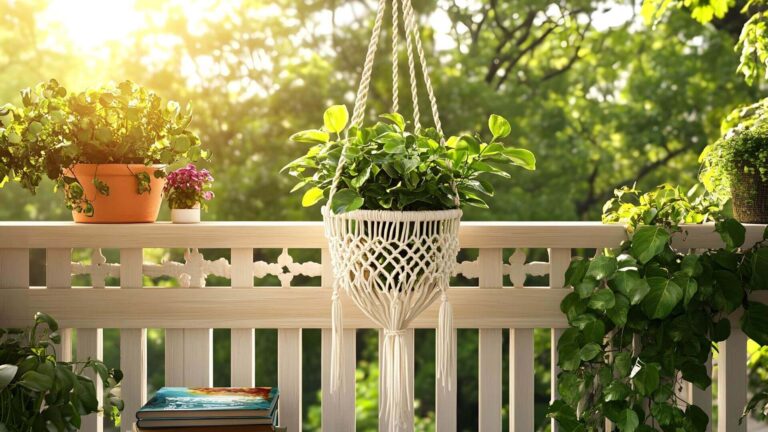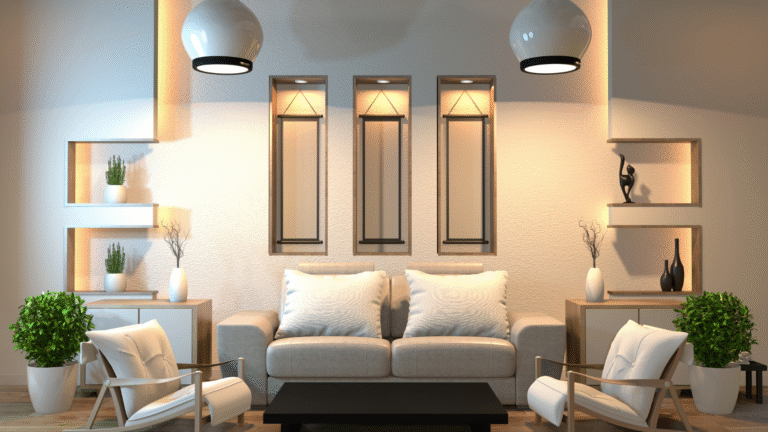Investing in furniture is more than just filling empty spaces in your home. It’s about making decisions that affect your daily comfort, your budget, and even the environment. When you choose durable furniture that can withstand decades of use, you’re not just being practical, you’re being smart with your money and reducing waste in the long run.
The truth is, most people don’t think about longevity when they’re shopping for furniture. They get caught up in aesthetics, price tags, or current trends. But here’s the reality: that cheap couch might look great in the showroom, but if it falls apart in three years, you haven’t saved money at all. You’ve just created more work and expense for yourself down the road.
So how do you separate the pieces that will serve you well for decades from those that will disappoint you before your next birthday? Let’s break it down.

Understanding What Makes Furniture Last
Before you even step into a showroom or start browsing online, you need to understand what actually makes furniture durable. It’s not magic, and it’s not just about spending the most money. It comes down to three core factors: materials, construction methods, and design integrity.
The materials used in furniture for living rooms, bedrooms, and other spaces determine how well pieces hold up under daily stress. Solid hardwoods like oak, maple, walnut, and cherry are investment materials that can last generations. They’re dense, resistant to warping, and can be refinished multiple times over their lifetime. Compare that to particle board or cheap veneers, which might look acceptable initially but will chip, swell with moisture, and fall apart with regular use.
Metal frames and hardware also matter significantly. Look for steel or wrought iron in furniture for outdoor patios or pieces that need to support weight, like the best ergonomic office chairs. Cheap metals will rust, bend, or snap under pressure.
Construction methods reveal whether a piece was built to last or built to sell. Dovetail joints, mortise-and-tenon connections, and corner blocks indicate quality craftsmanship. These traditional joinery techniques distribute stress evenly and create bonds that actually strengthen over time. Staples and glue alone? That’s a recipe for failure.
Evaluating Different Room Requirements
Not all furniture faces the same challenges. Durable furniture for home offices needs to support long hours of use without causing discomfort or breaking down. Durable furniture for kids’ rooms takes a beating from jumping, climbing, and general rough play. Durable furniture for rental properties or durable furniture for Airbnb rentals needs to withstand high turnover and varying levels of care from occupants.
When you’re selecting pieces for specific spaces, think about the actual usage patterns. Durable furniture for small apartments often needs to serve multiple purposes, making modular durable furniture systems an intelligent choice for longevity. These adaptable pieces can reconfigure as your needs change, extending the useful life of durable furniture significantly.
Space-saving durable furniture for small apartments shouldn’t compromise on quality just because it’s compact. A Murphy bed or fold-down desk built with solid materials and proper mechanisms will outlast a traditional bed frame made with inferior components. The same principle applies to durable furniture with hidden storage—the hinges, slides, and support structures need to handle repeated opening and closing cycles.
For specialty spaces like durable furniture for home theaters or durable furniture for home gyms, durability means accounting for specific stressors. Theater seating needs fabrics that resist staining and frames that support extended sitting sessions. Gym durable furniture must handle equipment weight, sweat exposure, and frequent repositioning, ensuring it lasts for years.
Material-Specific Considerations
Let’s talk about sustainable furniture brands and why they often produce more durable products. Companies focused on sustainability typically use solid wood, recycled metals, and high-quality natural fabrics because these materials are renewable and long-lasting. They’re not cutting corners with cheap substitutes that end up in landfills.
Custom-made wooden furniture offers distinct advantages for durability. When you work with a craftsperson who builds furniture to order, you can specify hardwoods, joinery techniques, and finishes designed for your specific needs. Yes, it costs more upfront, but that vintage style furniture your grandparents owned? Probably custom-made or at least built with similar attention to detail.
Upholstery fabric selection deserves serious consideration. For furniture for pet owners, tightly woven, durable fabrics like microfiber or leather resist scratches and clean easily. Furniture for coastal homes needs materials that resist moisture and salt air damage. Indoor pieces have different requirements than furniture for outdoor patios, which must handle UV exposure, rain, and temperature fluctuations.
The Price-Quality Balance
Here’s where things get tricky. Affordable modern furniture exists, and not all of it is junk. The key is knowing what you’re looking at and what compromises you’re accepting.
Sometimes a lower price reflects efficient manufacturing or direct-to-consumer business models rather than inferior quality. Other times, it signals exactly what you’d expect—cheap materials and rushed construction. Learning to spot the difference protects you from expensive mistakes.
Luxury bedroom furniture sets command premium prices for reasons beyond brand names. They typically feature solid hardwood construction, hand-tied springs in upholstered pieces, and premium fabrics or finishes. But luxury doesn’t always equal durability. Some high-end pieces prioritize aesthetics over longevity, featuring delicate finishes or trendy designs that won’t age well.
The smartest approach? Invest heavily in pieces you use daily and expect to keep for decades. Minimalist furniture designs often work well here because simple, timeless styles don’t go out of fashion. Save money on accent pieces or items you might want to update as your tastes evolve.
Construction Red Flags and Green Lights
When examining potential purchases, certain details reveal quality levels immediately. Drawers should glide smoothly on ball-bearing slides, not cheap plastic tracks. Furniture for home libraries or pieces with shelving need adjustable supports and proper backing to prevent sagging or tipping.
Check how doors and drawers fit within their frames. Tight, even gaps indicate precision manufacturing. Crooked or uneven spacing suggests sloppy construction that will only worsen with use. For furniture for study rooms or home offices where you’ll interact with storage daily, these details dramatically affect long-term satisfaction.
Upholstered furniture presents its own evaluation challenges. Look underneath for corner blocks, eight-way hand-tied springs, or at minimum, sinuous springs properly attached to the frame. Avoid pieces where you can feel the frame through the cushions or where cushions seem thin and unsupportive. These comfort issues won’t improve with time.
Finish quality matters more than most people realize. A proper finish protects wood from moisture, stains, and scratches. Multiple thin coats indicate quality application versus one thick coat applied quickly. For furniture for home bars or furniture for home spas where moisture exposure is likely, ask specifically about moisture-resistant finishes.
Maintenance and Long-Term Care
Even the most durable furniture needs proper care to reach its full lifespan potential. Understanding maintenance requirements before you buy helps ensure you’re willing to provide necessary care.
Furniture for college dorms or furniture for vacation homes might face neglect, making low-maintenance materials essential. Sealed wood, stain-resistant fabrics, and simple designs without delicate details hold up better under less-than-ideal care conditions.
Real wood furniture benefits from periodic conditioning with appropriate products. Leather needs regular cleaning and conditioning to prevent cracking. Even furniture for home staging, which sees minimal use, requires protection from sunlight and humidity fluctuations to maintain appearance and structural integrity.
For furniture for elderly care, durability intersects with safety and accessibility. Sturdy construction prevents tipping or collapsing under assisted weight transfer. Scratch-resistant finishes maintain appearance despite potential walker or wheelchair contact. These specialized needs demonstrate why matching furniture characteristics to usage patterns matters so much.
The Environmental and Economic Case for Durability
Choosing durable furniture carries implications beyond your immediate satisfaction. Furniture waste represents a growing environmental problem, with millions of tons ending up in landfills annually. Pieces designed to last decades rather than years dramatically reduce this impact.
Economically, the math strongly favors quality purchases. A solid wood dining table might cost three times more than a particle board alternative, but if it lasts 40 years instead of five, you’ve saved money even before accounting for the hassle and effort of multiple replacements. This calculation becomes even more favorable for furniture for home offices or bedroom sets used daily.
For furniture for urban apartments where moving costs add up, durable pieces that survive multiple relocations without damage prove especially valuable. Quality furniture maintains resale value too, recouping more of your initial investment if you eventually sell or upgrade.
Making the Final Decision
When you’re ready to purchase, take your time. Visit showrooms to examine durable furniture construction firsthand. Read reviews focusing on long-term durability rather than initial impressions. Ask retailers about warranty coverage and what it actually includes.
For significant purchases like durable furniture for home theaters or complete bedroom sets, request detailed information about materials and construction methods. Legitimate quality manufacturers are proud to share these details. Vague descriptions or reluctance to provide specifics should raise concerns when evaluating durable furniture.
Consider the total cost of ownership, not just the purchase price. Factor in expected lifespan, maintenance requirements, and replacement costs. This perspective often reveals that moderate spending on durable furniture beats both bargain shopping and luxury spending for items you don’t need.
Remember that durable furniture choices reflect your priorities and lifestyle. There’s no universal right answer, but understanding what makes furniture durable empowers you to make informed decisions aligned with your specific needs, whether you’re furnishing a permanent home or selecting durable furniture for rental properties.
Always inspect materials and joinery to ensure the durable furniture you choose will stand up to daily use and last for years. Prioritize brands known for durable furniture and customer satisfaction, so every piece adds lasting value to your home.
What type of wood furniture lasts the longest?
Hardwoods like oak, maple, walnut, cherry, and teak offer the best longevity for furniture. These dense woods resist wear, warping, and damage while accepting refinishing multiple times throughout their lifespan. Solid hardwood construction outlasts engineered woods or softwoods by decades when properly maintained.
How can I tell if furniture is well-made when shopping online?
Look for detailed descriptions of materials (solid wood versus veneers or particle board), joinery methods (dovetail, mortise-and-tenon), and hardware quality. Check customer reviews specifically mentioning durability after extended use. Reputable sellers provide comprehensive construction information and generous return policies that indicate confidence in their products.
Is expensive furniture always more durable?
Not necessarily. Price reflects brand positioning, materials, craftsmanship, and marketing costs. Some affordable brands use quality materials and construction methods, while some luxury pieces prioritize aesthetics over durability. Evaluate actual construction details rather than assuming price indicates longevity.
How often should quality furniture be replaced?
Well-made furniture can last 20 to 50 years or more with proper maintenance. Solid wood pieces often last multiple generations. Upholstered furniture may need reupholstering after 15 to 20 years, but quality frames can support multiple fabric updates. Replace furniture when it becomes structurally unsafe or no longer meets your functional needs, not based on arbitrary timelines.
What maintenance does durable furniture require?
Wood furniture needs periodic dusting, occasional conditioning with appropriate products, and protection from direct sunlight and extreme humidity changes. Upholstered pieces benefit from regular vacuuming and prompt stain treatment. Metal furniture requires checking for rust and tightening hardware. Most quality furniture needs minimal maintenance beyond basic cleaning and mindful use.







